Lesson Overview
Lesson Objectives
- Recognize imagery within sentences.
- Differentiate between the types of imagery.
- Analyze how imagery contributes to the tone of a text.
- Use imagery to create a story to enhance storytelling experiences.
- Reflect on the significance of imagery in literature and creative writing.
Lesson Outcomes
At the end of the lesson, learners will be able to:
- Identify and highlight instances of imagery in provided sentences and text.
- Distinguish between visual, auditory, olfactory, gustatory, and tactile imagery, providing examples for each.
- Employ imagery effectively to craft a narrative that vividly engages readers and elicits sensory and emotional responses, enhancing the storytelling experience.
- Use Artificial Intelligence to generate prompts and ideate.
- Critically reflect on the role of imagery in literature and creative writing, recognizing its power to create depth and connection between writers and readers.
Prior Knowledge
- Basic understanding of sentence structures.
- Basic knowledge of literary devices (e.g., metaphors, similes, and symbolism) can be helpful but is not mandatory.
Pre-Lesson Preparation
- Like all lessons on Eddy, this lesson follows a specific approach. If this is your first time implementing an Eddy lesson, check out our 'How to set up an Eddy Classroom' for more information.
- Prepare for necessary technology/hardware in advance.
- Devices (tablets/laptops/chromebooks/computers) for each learner.
- A stable wifi connection.
- Access to AI Dungeon on each device.



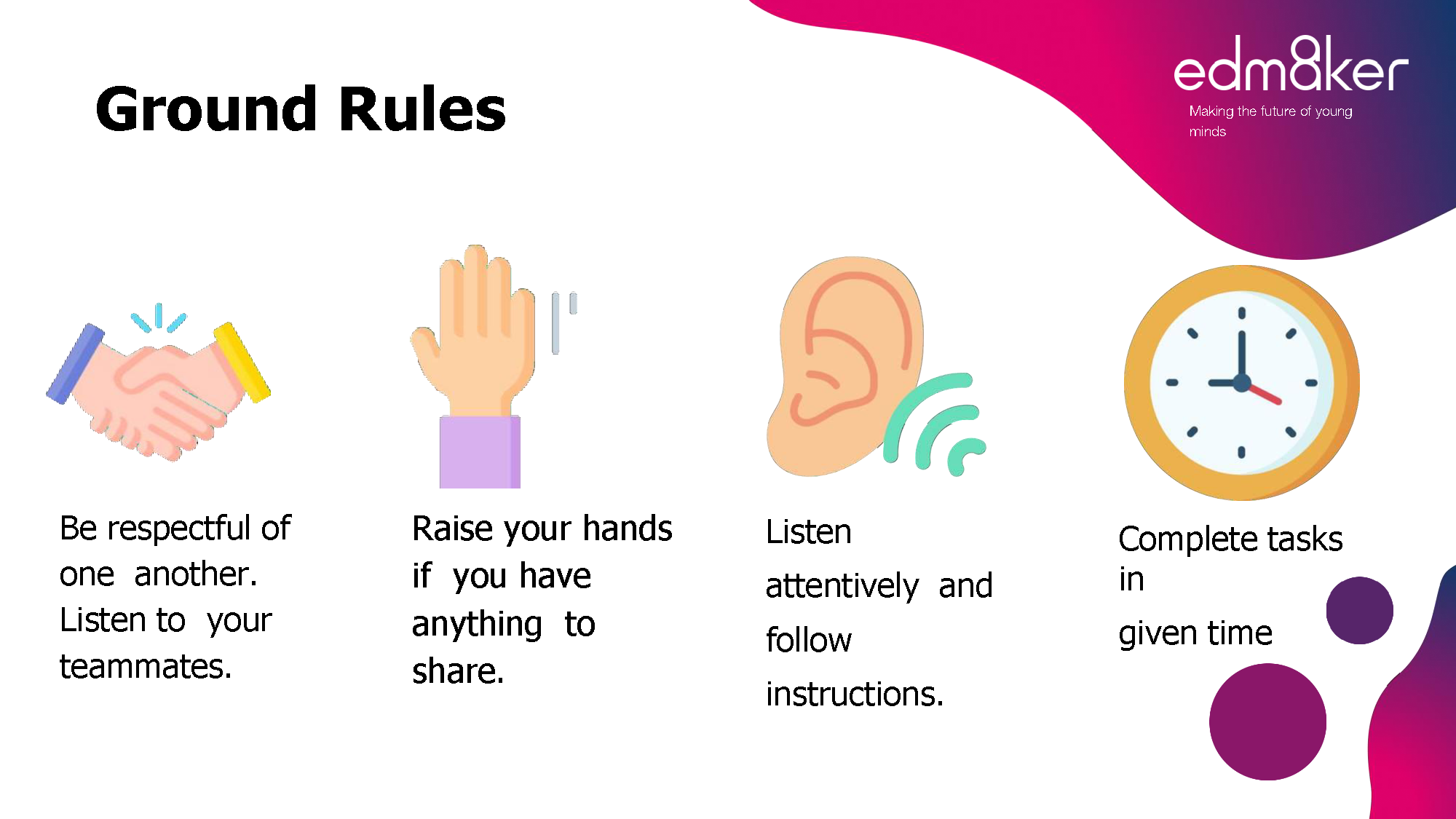
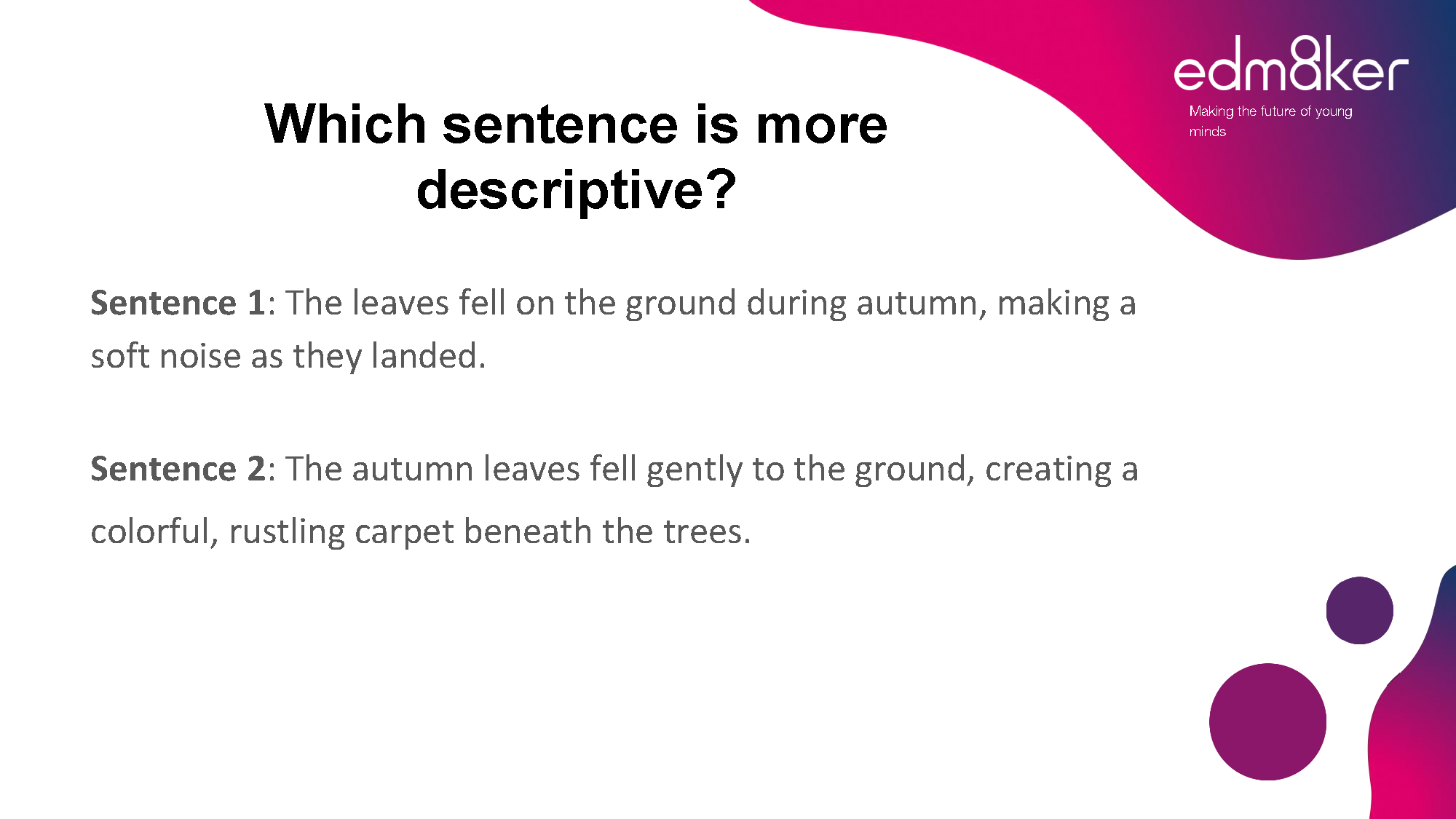
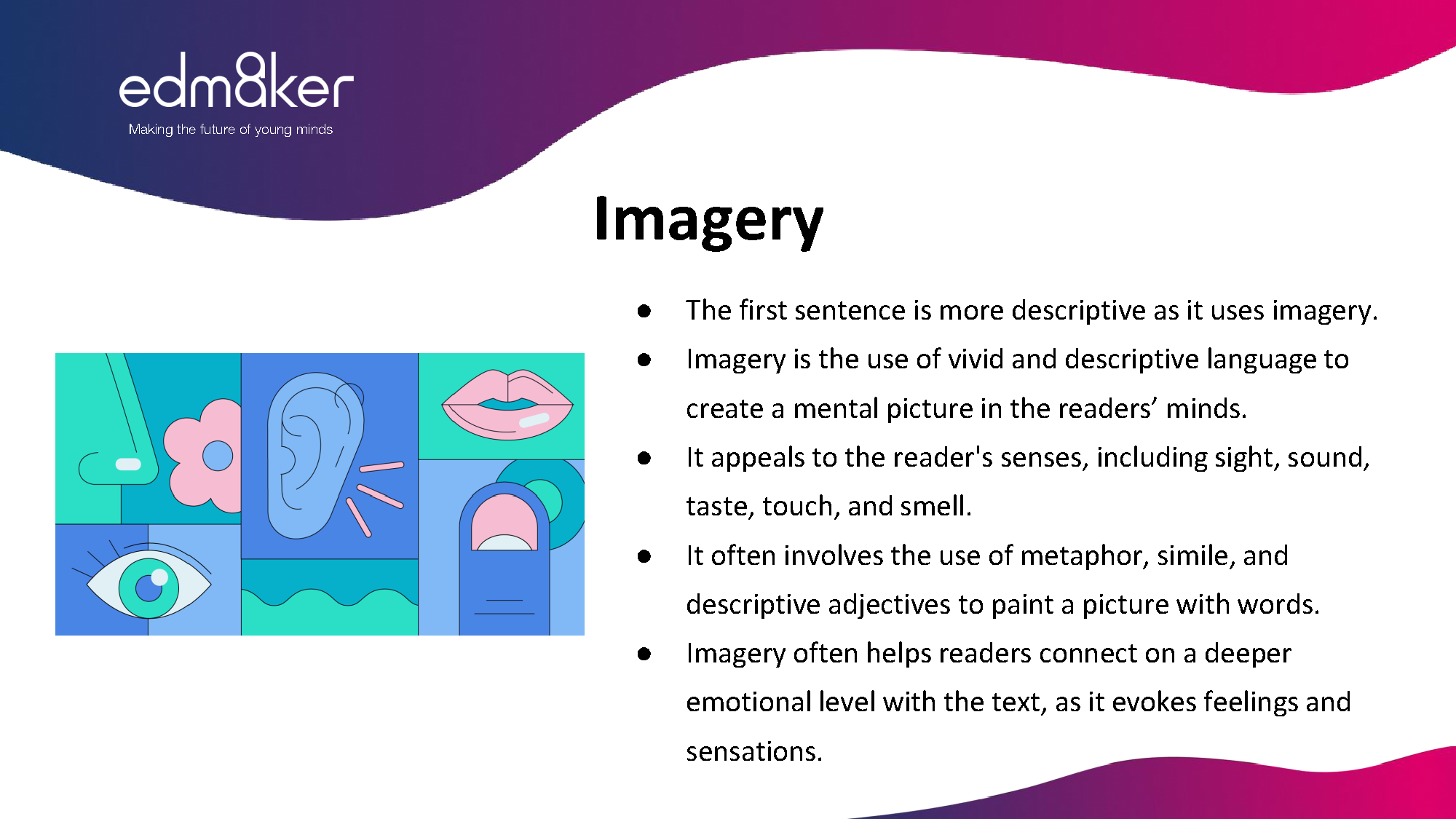
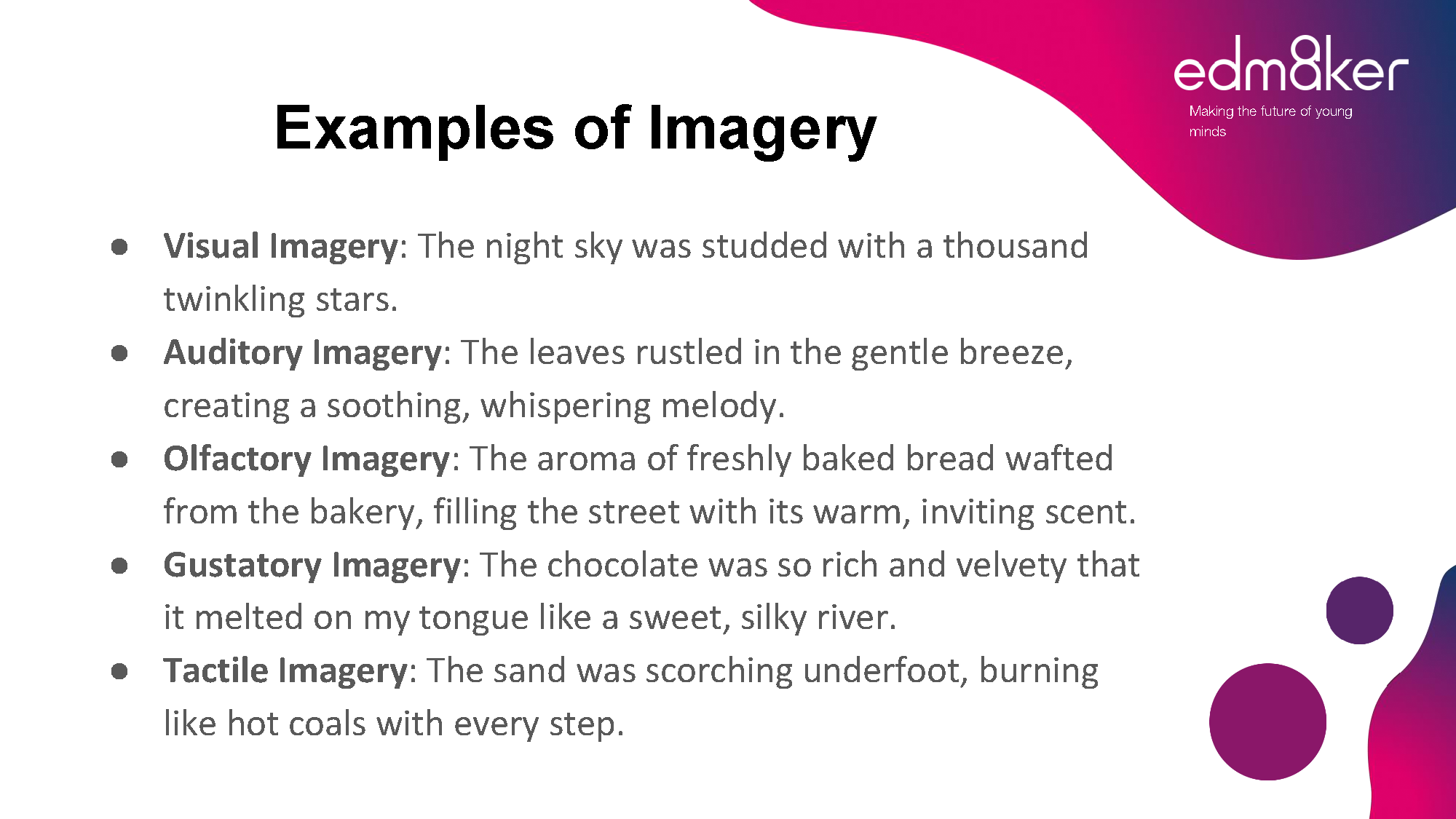
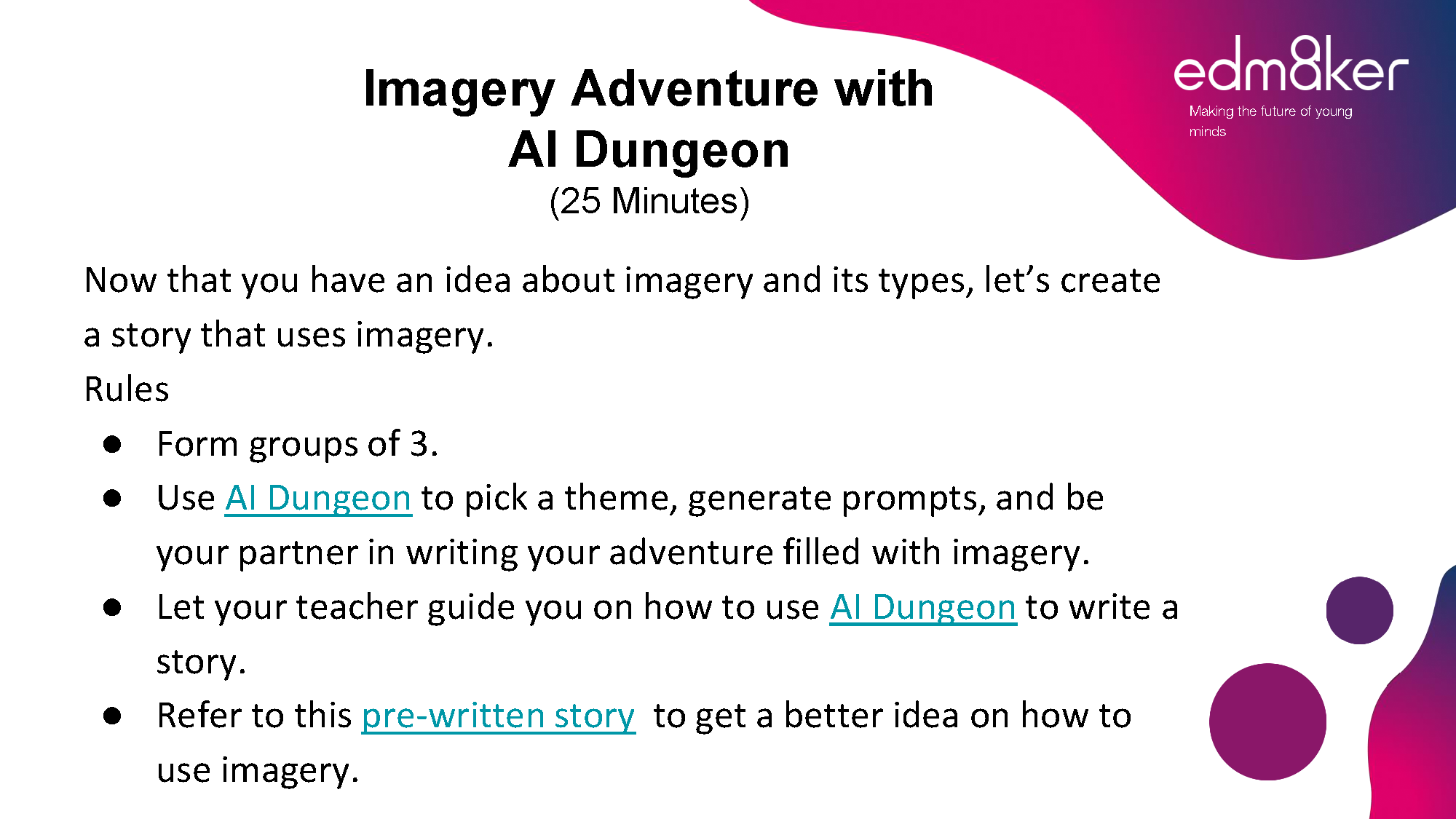
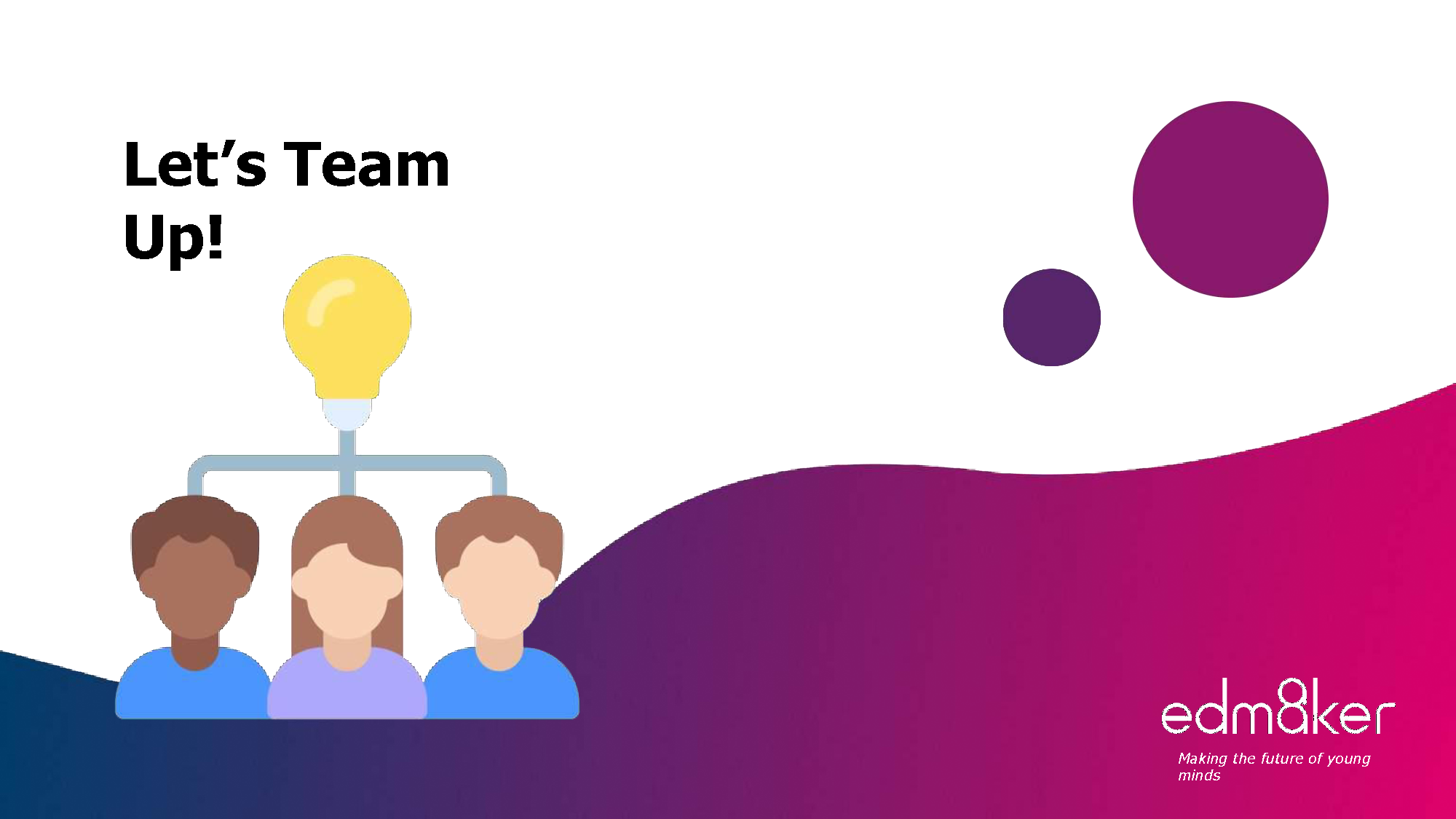
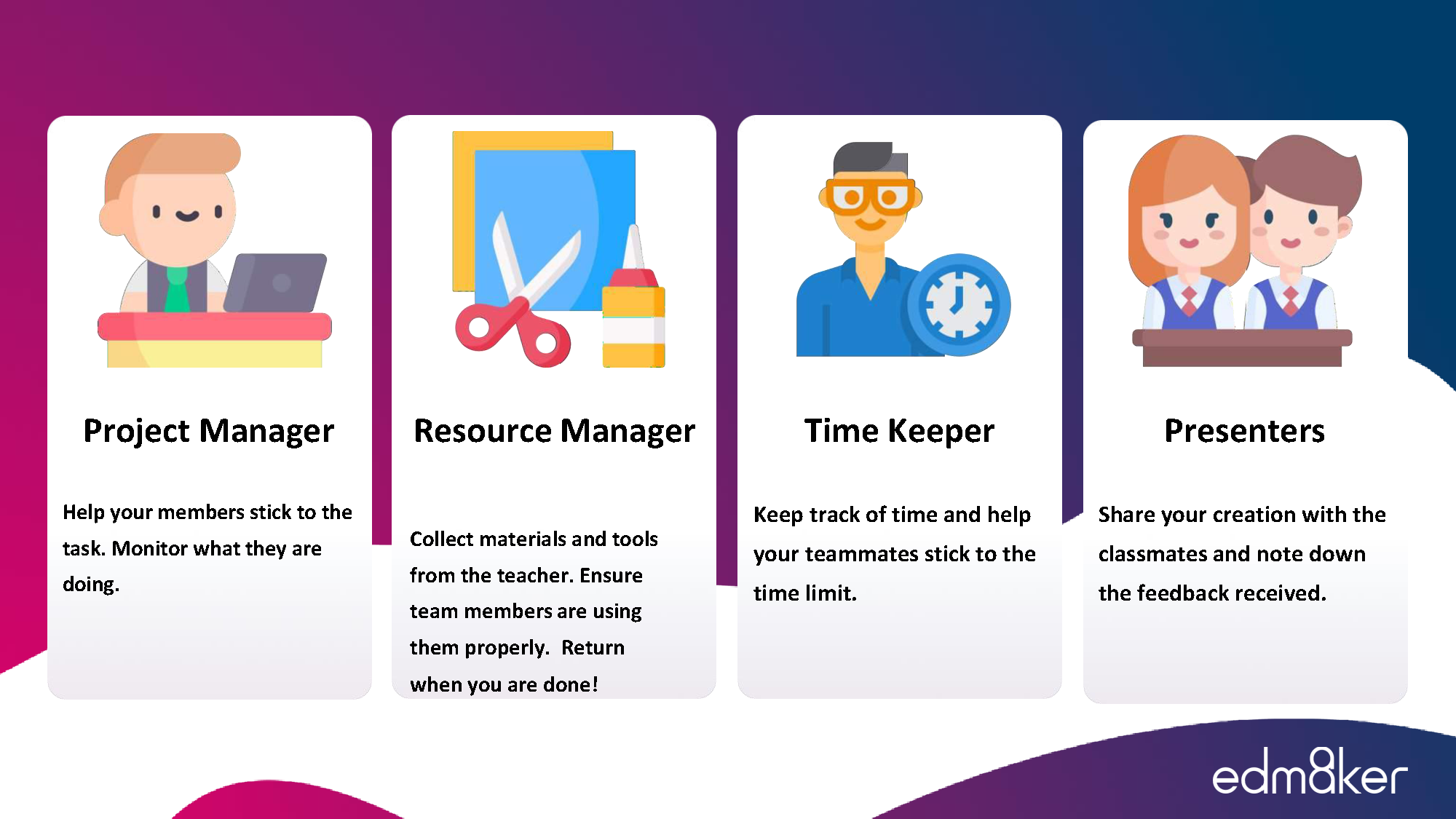
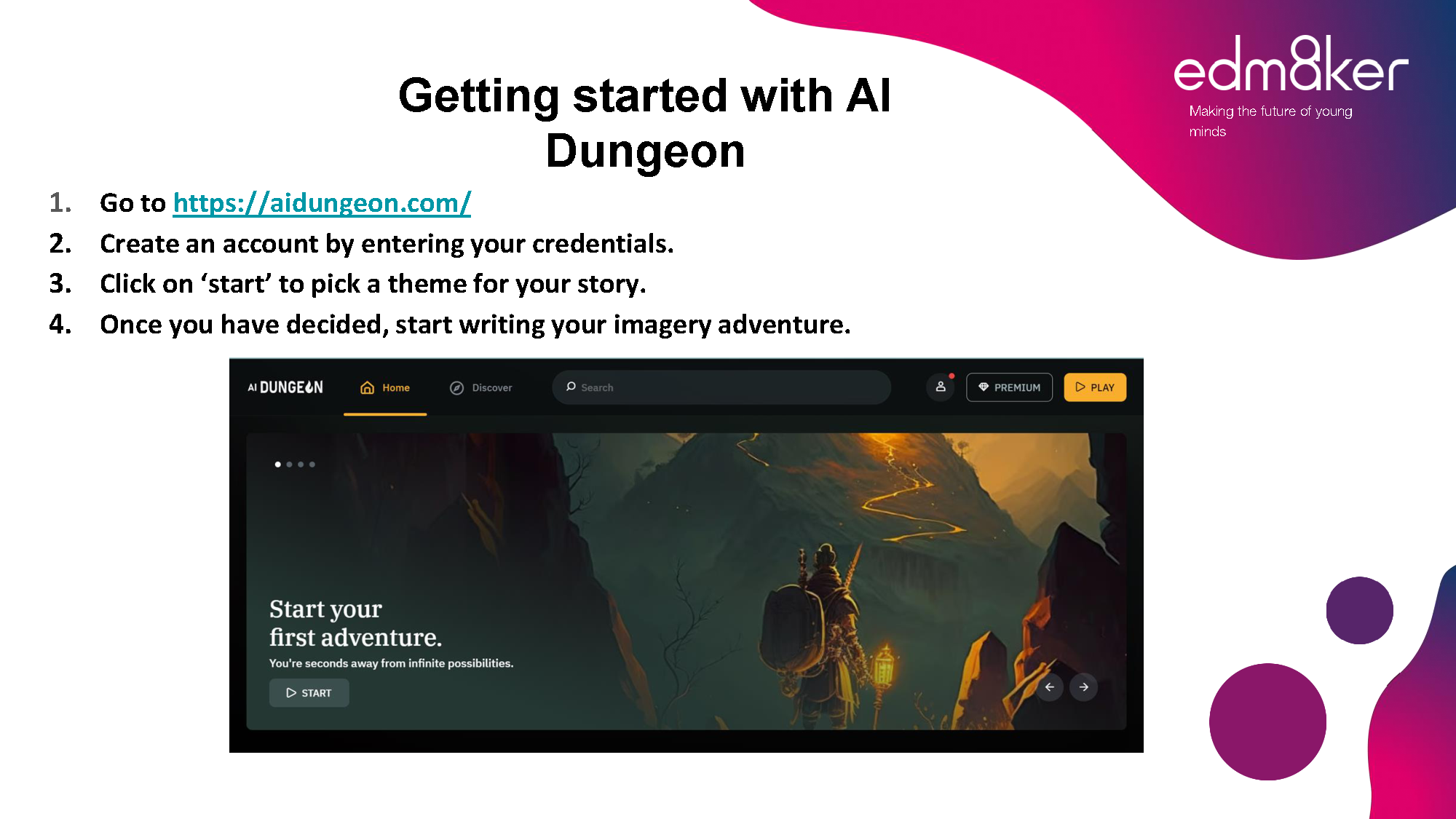

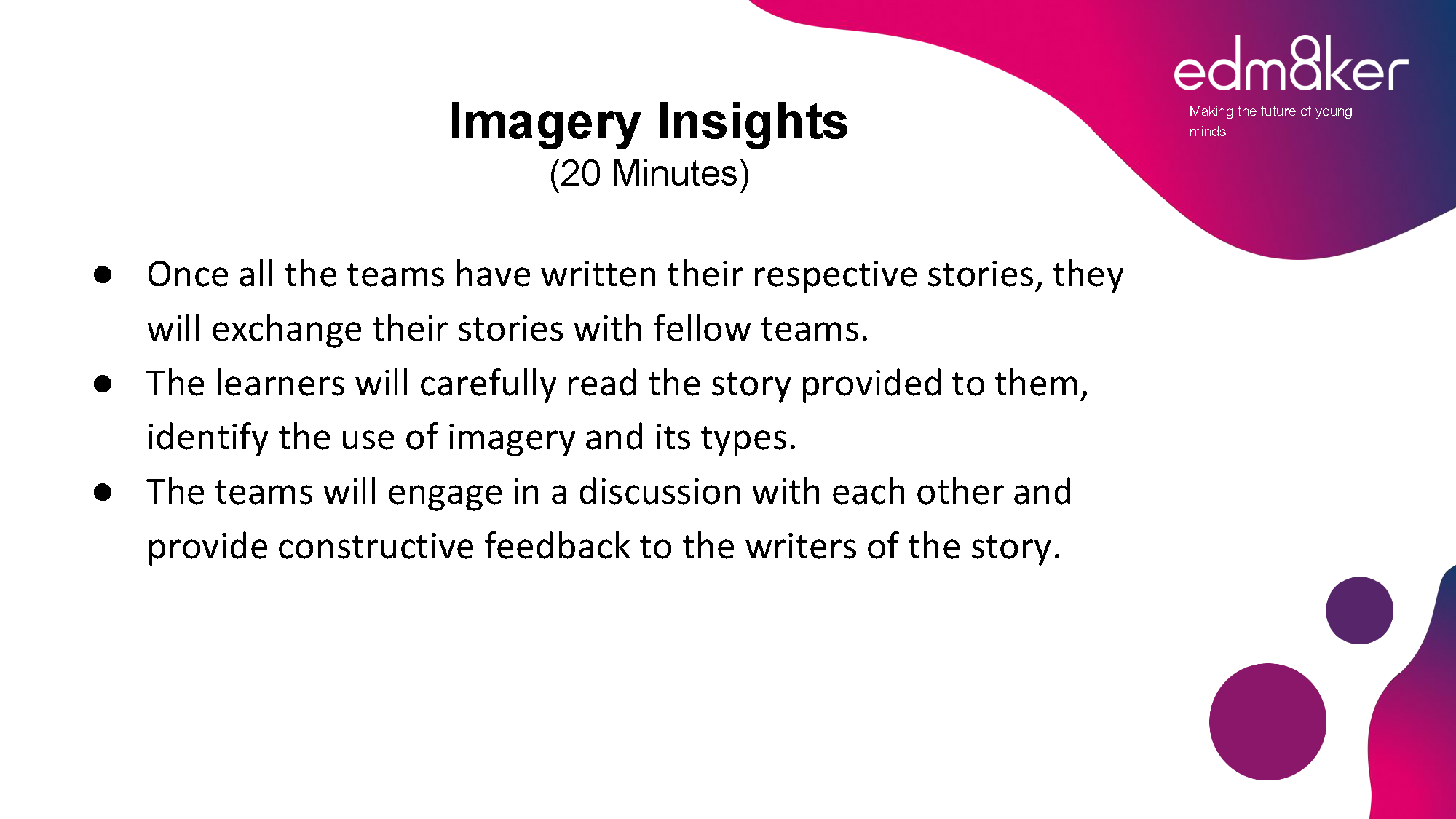
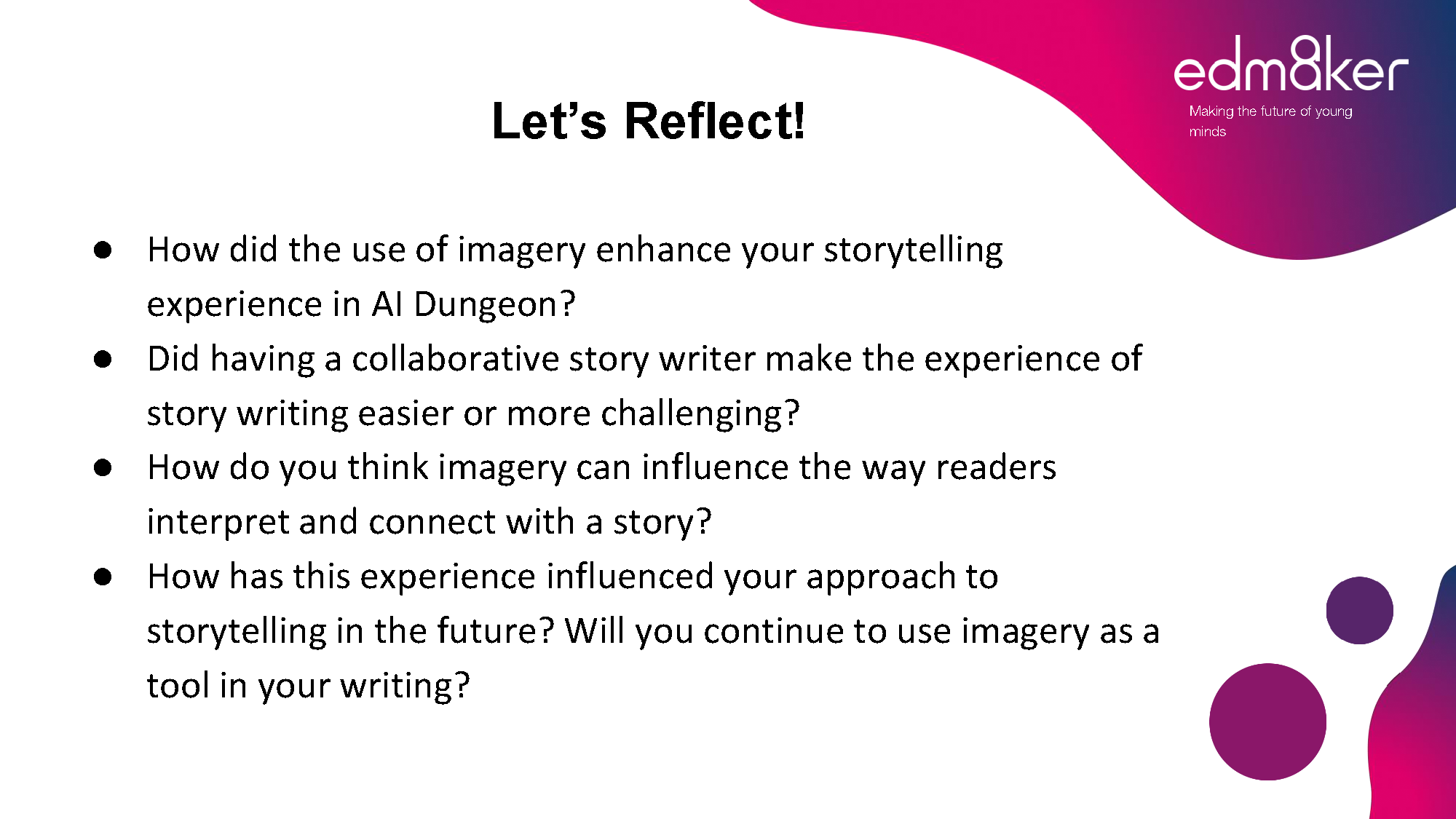









Overview
Activity Objectives
Opening Activity
Learners will compare two sentences and decide which of the two is more descriptive. They will further explore the different types of imagery.
Main Activity
Learners will write a story, which incorporates imagery by using AI Dungeon as their collaborative partner.
Closing Activity
Learners will read stories of their fellow classmates, identify the different types of imagery used, and provide constructive feedback.